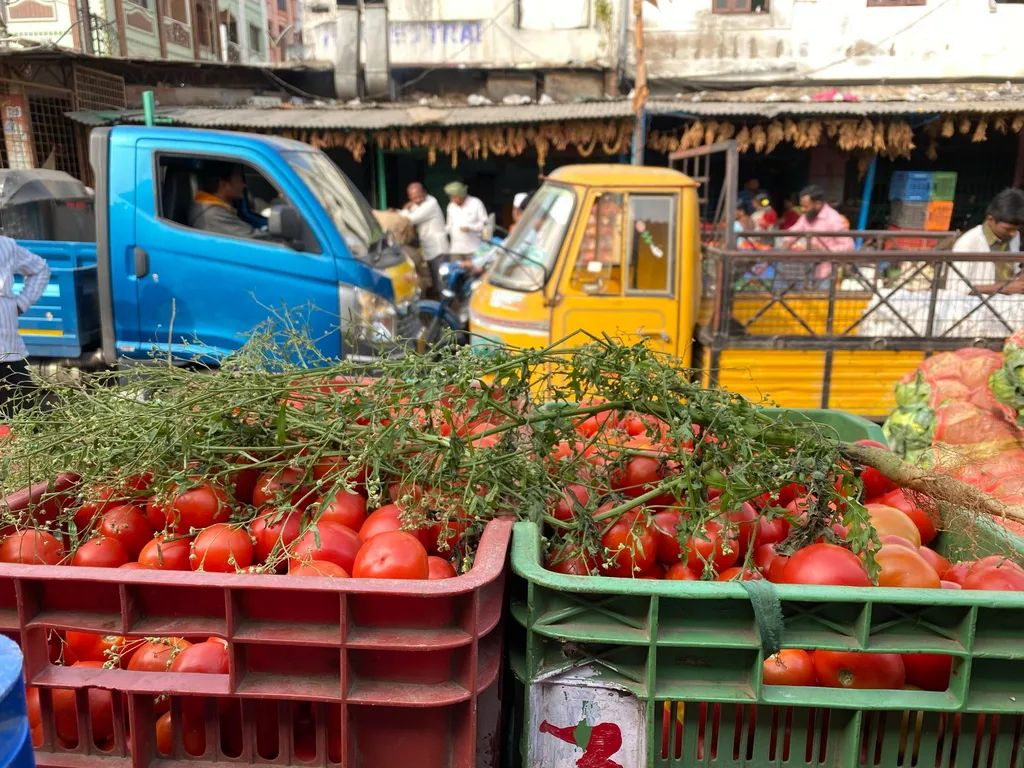In the heart of India, where the Ganges flows and agriculture is a way of life, a pressing question looms: how will climate change alter the future of tomato farming? A recent study published in *Smart Agricultural Technology* (translated as *Intelligent Agricultural Technology*), led by Pashupati Nath Singh from the Remote Sensing Laboratory at Banaras Hindu University, offers some sobering insights. The research, which employed the Decision Support System for Agrotechnology Transfer (DSSAT) model, paints a picture of accelerated growth cycles and declining yields for tomato crops in Central India, with significant implications for farmers and the broader agricultural sector.
Climate change is not a distant threat; it’s already reshaping the agricultural landscape. Singh and his team set out to understand how anticipated climate scenarios would impact tomato crops, a staple in Central India. By simulating climate conditions under two Shared Socioeconomic Pathways (SSP 4.5 and SSP 8.5) across three timeframes—near-century (2010–2039), mid-century (2040–2069), and far-century (2070–2099)—the researchers uncovered a trend that could disrupt traditional farming practices.
“Our findings reveal a distinct phenological advancement, characterized by a reduction in days to flowering and fruiting,” Singh explained. This acceleration in growth stages is driven by increased temperatures and altered solar radiation patterns. However, the silver lining is that the marginal reduction in solar radiation might partially mitigate the enhanced evapotranspiration demand caused by warming trends.
The study also highlighted spatial variability in rainfall patterns, with central zones experiencing intensified precipitation while western and northwestern regions face monsoonal weakening and prolonged dry spells. These changes could lead to significant shifts in tomato production hotspots, challenging farmers to adapt to new climatic realities.
The DSSAT model, calibrated with historical climate data and genetic coefficients, demonstrated robust predictive accuracy. With an R-value of 0.78 and a Nash–Sutcliffe Efficiency (NSE) of 0.59, the model’s reliability was affirmed, providing a solid foundation for future climate-resilient strategies.
For the agricultural sector, these findings are a wake-up call. “This research underscores the utility of process-based models in decoding climate–phenology–yield relationships,” Singh noted. By understanding these dynamics, stakeholders can develop strategies to mitigate the impacts of climate change on tomato production.
The commercial implications are substantial. Tomato is a high-value crop, integral to both domestic consumption and export markets. Changes in yield and production patterns could affect supply chains, market prices, and food security. Farmers may need to adopt new cultivation practices, invest in climate-resilient varieties, and optimize water management strategies to cope with the evolving climate conditions.
Moreover, the energy sector, which is closely intertwined with agriculture through irrigation and food processing, must prepare for shifts in demand and resource allocation. As farming practices evolve to adapt to climate change, the energy sector will need to innovate and provide sustainable solutions to support these changes.
The study published in *Smart Agricultural Technology* serves as a critical guide for policymakers, agronomists, and farmers. It highlights the importance of leveraging advanced modeling techniques to anticipate and address the challenges posed by climate change. By doing so, the agricultural sector can pave the way for sustainable and resilient tomato production in the face of an uncertain climate future.
As Singh and his team continue to explore these dynamics, their work offers a beacon of hope and a roadmap for action. The future of tomato farming in Central India may be fraught with challenges, but with the right tools and strategies, it can also be a story of adaptation and resilience.

